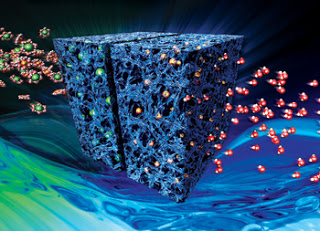

| Visitors Now: | |
| Total Visits: | |
| Total Stories: |

| Story Views | |
| Now: | |
| Last Hour: | |
| Last 24 Hours: | |
| Total: | |
New desalination technique uses flow-through electrodes for faster desalination and lower cost
From
- removes salt five to 10 times faster than previous CD systems, and can be further optimized for increased speed.
-It also reduces the concentration of the feed up to three times as much per charge
In capacitive desalination (CD), a voltage is applied between two porous electrodes to adsorb ions onto the electrode surface and thus remove them from the feed stream. Traditionally, due to the small pore sizes of the electrodes, the feed stream flows between the electrodes and through a dielectric porous separator.
The new technique, called flow-through electrode capacitive desalination (FTE CD), uses new porous carbon materials with a hierarchical pore structure, which allows the saltwater to easily flow through the electrodes themselves. Flowing through the electrode allows for several significant advantages relative to traditional flow between systems, including faster desalination, more salt removed for each charge of the capacitor, and more energy efficient desalination. Finally, flow-through can be used with a thinner separator as the separator is no longer a flow channel, therefore reducing the overall and electrical resistance of the device, which further decreases costs.
Flow-through electrode capacitive desalination uses a new hierarchical porous carbon material to create a new device geometry in which the feed stream passes directly through the electrodes, resulting in significant improvements to salt removal and desalination rate.
See more and subscribe to NextBigFuture at 2012-08-05 11:46:27 Source: http://nextbigfuture.com/2012/08/new-desalination-technique-uses-flow.html
Source:



